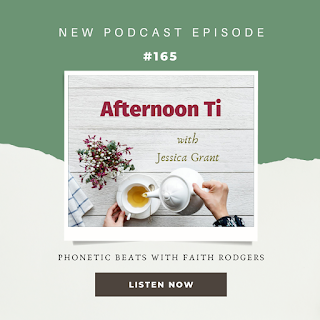Afternoon Ti Podcast
Season 9
Episode 165
Phonetic Beats with Faith Rodgers
Faith is a 29 year old mom and elementary music teacher from Dallas, Tx. When her son Steven was 2, he was diagnosed with a severe speech and language delay. Faith tried all the big name phonics companies to help Steven learn, but they all ended in tantrums. Finally one day Faith had the idea to take a hip hop beat and make a letter A rap and Steven loved it! Not only did Steven love it but it went viral. It was on that day that the idea of Phonetic Beats was born. Here we are 3 years later and Faith has completed individual raps for each letter of the alphabet.
Phonetic Beats Website
Phonetic Beats YouTube Channel
Voyage Dallas Article
I met Faith Rodgers at SMU during our time in grad school and it’s been so wonderful watching what she is creating and putting out into the world for parents and educators. Her company Phonetic Beats encourages phonetic literacy in small children through trap music. And it’s so fantastic - you’ll want to dance! You’ll want to sing and you’ll want to use it with your young students. We talk about how Faith began Phonetic Beats, what it is all about, and what’s coming next. You can find Phonetic Beats on iTunes and Spotify as well as subscribe to the Phonetic Beats Channel on YouTube.

Comments
Post a Comment